In his first public comments since the surprise disintegration of the commercial SpaceX Falcon 9 rocket some two minutes after last week’s liftoff on June 28, SpaceX CEO Elon Musk said today (July 7) that the launch failure was a “huge blow” to his company and the cause remains elusive and is under intense investigation.
“The accident was a huge blow to SpaceX,” Musk told the opening session of the International Space Station Research & Development Conference being held in Boston, Mass, during an on-stage conversation with NASA’s International Space Station manager Mike Suffredini.
The private SpaceX Falcon 9 booster broke up just minutes after a picture perfect blastoff from Cape Canaveral on a crucial logistics flight for NASA, carrying a SpaceX Dragon cargo freighter that was headed to the International Space Station (ISS).
Dragon was chock full of over two tons of research experiments and much needed supplies and gear for the multinational crews serving aboard.
“There’s still no clear theory that fits with all the data,” Musk said. “We take these missions incredibly seriously.”
The cargo ships function as a railroad to space and the lifeline to keep the station continuously crewed and functioning. Without periodic resupply by visiting vehicles the ISS cannot operate.
The SpaceX Falcon 9 and Dragon were destroyed just over two minutes after a stunning liftoff from Space Launch Complex 40 at Cape Canaveral Air Force Station in sunny Florida at 10:21 a.m. EDT.
The upper stage of the rocket suddenly exploded due to an as yet unexplained anomaly as the nine first stage Merlin 1D engines kept firing. Moments later it vaporized into a grayish cloud at supersonic speed, raining debris down into the Atlantic Ocean.
Although the second stage appears to be the culprit in the disaster, Musk said that there is still not a coherent cause and explanation of the data and was hard to interpret.
“Whatever happened is clearly not a sort of simple, straightforward thing,” he explained. “In this case, the data does seem to be quite difficult to interpret.”
“So we want to spend as much time as possible just reviewing the data. No clear theory fits all the data.”
The Falcon 9 was transmitting data on over 3,000 channels of flight data streams.
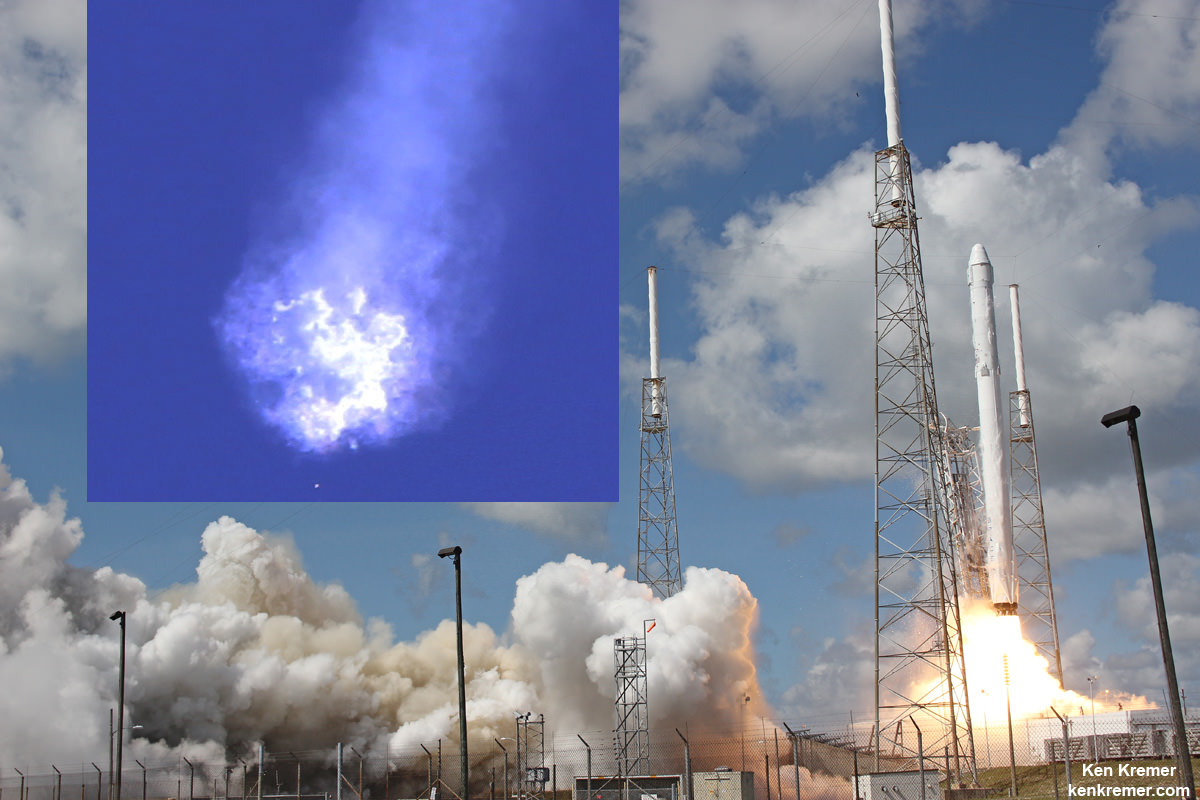
Virtually since the moment of the mishap approximately 139 seconds after the otherwise successful launch, SpaceX engineers have been pouring over the data to try and determine the root cause of the accident.
“Everyone that can engage in the investigation at SpaceX is very, very focused on that,”Musk elaborated. “We want to spend as much time as possible just reviewing the data.”
From the beginning Musk indicated that there was some type of over pressure event in the upper stage liquid oxygen tank and he elaborated a bit at the conference.
“At this point, the only thing that’s really clear was there was some kind of over-pressure event in the upper stage liquid oxygen tank, but the exact cause and sequence of events, there’s still no clear theory that fits with all the data.”
“So we have to determine if some of the data is a measurement error of some kind, or if there’s actually a theory that matches what appear to be conflicting data points.”
SpaceX is conducting an intense and thorough investigation with the active support of various government agencies including the FAA, NASA and the U.S. Air Force.
“The interaction with NASA has been great so far,” Musk said. “The biggest challenge is that there are a lot of inquiries coming in simultaneously, so it’s hard to keep responding to everyone right away.”
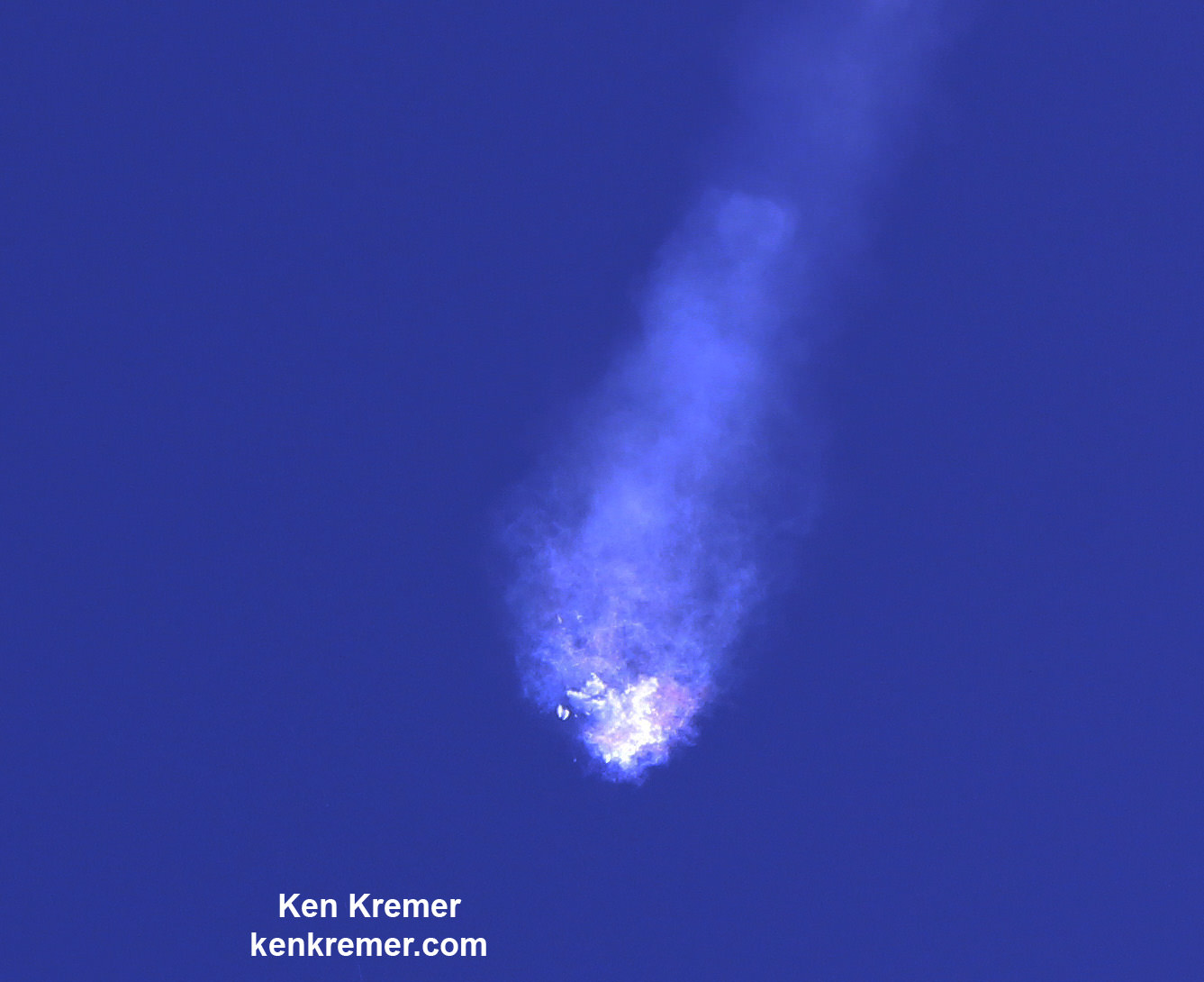
The accident investigation is in full swing both at the Cape and SpaceX headquarters in Hawthorne, Ca.
Hans Koenigsmann, SpaceX VP of Mission Assurance, is leading the accident investigation for SpaceX.
“The process for determining the root cause of Sunday’s mishap is complex, and there is no one theory yet that is consistent with the data,” SpaceX spokesman John Taylor told me earlier.
“Our engineering teams are heads down reviewing every available piece of flight data as we work through a thorough fault tree analysis in order to identify root cause.”
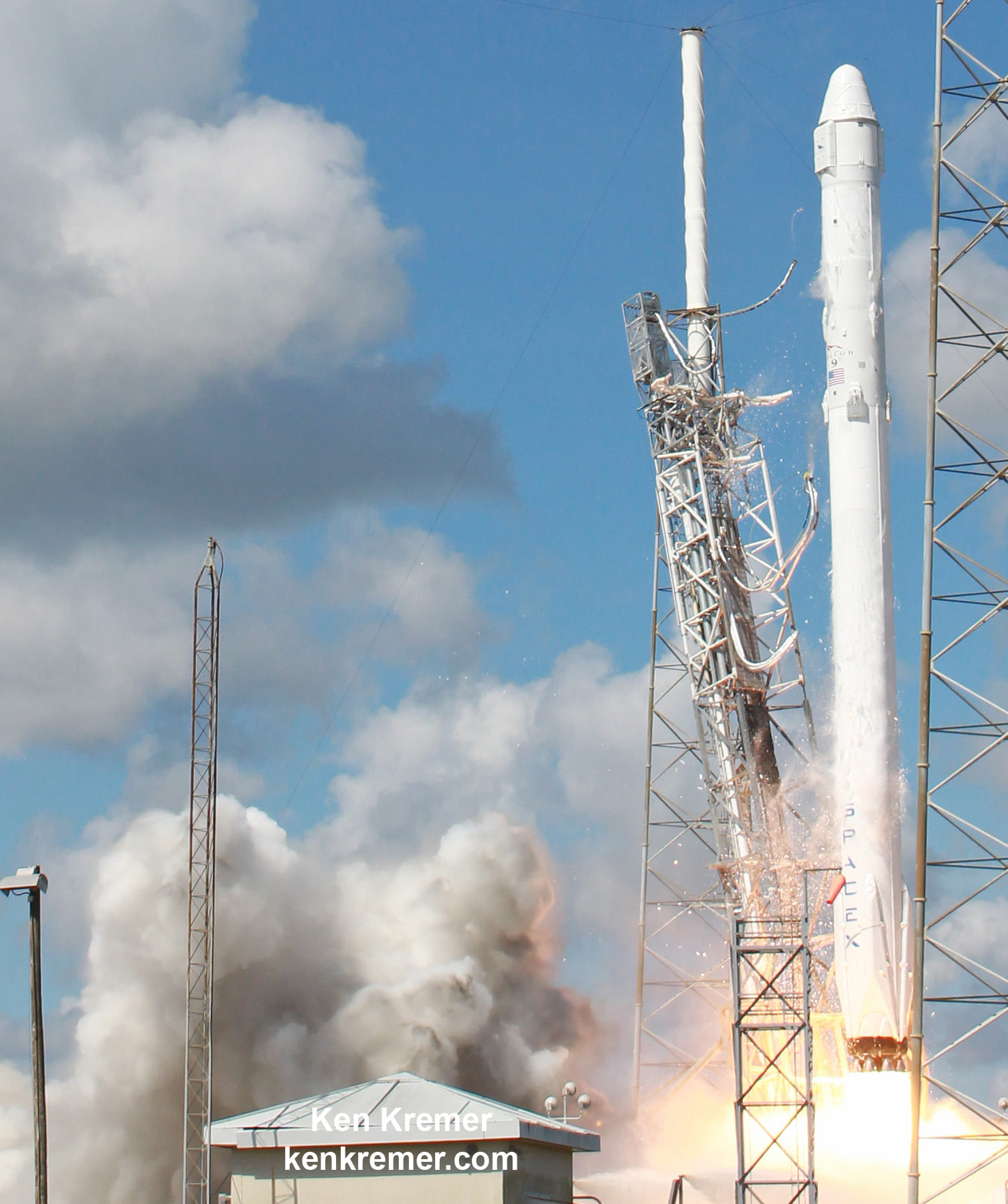
The June 28 launch was the 19th overall for the Falcon 9 booster and the first failure in an otherwise hugely successful program by the new space company founded by Musk and headquartered in Hawthorne, CA. Musk’s oft stated goals include radically slashing the cost of access to space to enable much wider participation in the space frontier by entrepreneurs and individuals and foster much greater exploration that will aid human missions to the Red Planet.
SpaceX may have more to say publicly later this week.
“I think we’ll be able to say something more definitive towards the end of the week,” Musk noted.
In the meantime all SpaceX launches are on hold for several months at least.
The SpaceX CRS-7 cargo launch failure was the second of two back to back cargo delivery launch failures run to the space station, including both American and Russian rockets since April, and the third in the past eight months that significantly crimped the stations stockpiles and abruptly impacted upcoming crew rotations and launches throughout the remainder of 2015.
Fortunately, the string of launch failures with the successful launch the Russian Progress 60 cargo freighter on July 3, five days after the SpaceX CRS-7 failure. Progress 60 docked at the ISS on July 5 with three tons of supplies, to the relief of the station partners worldwide.
Stay tuned here for Ken’s continuing Earth and planetary science and human spaceflight news.
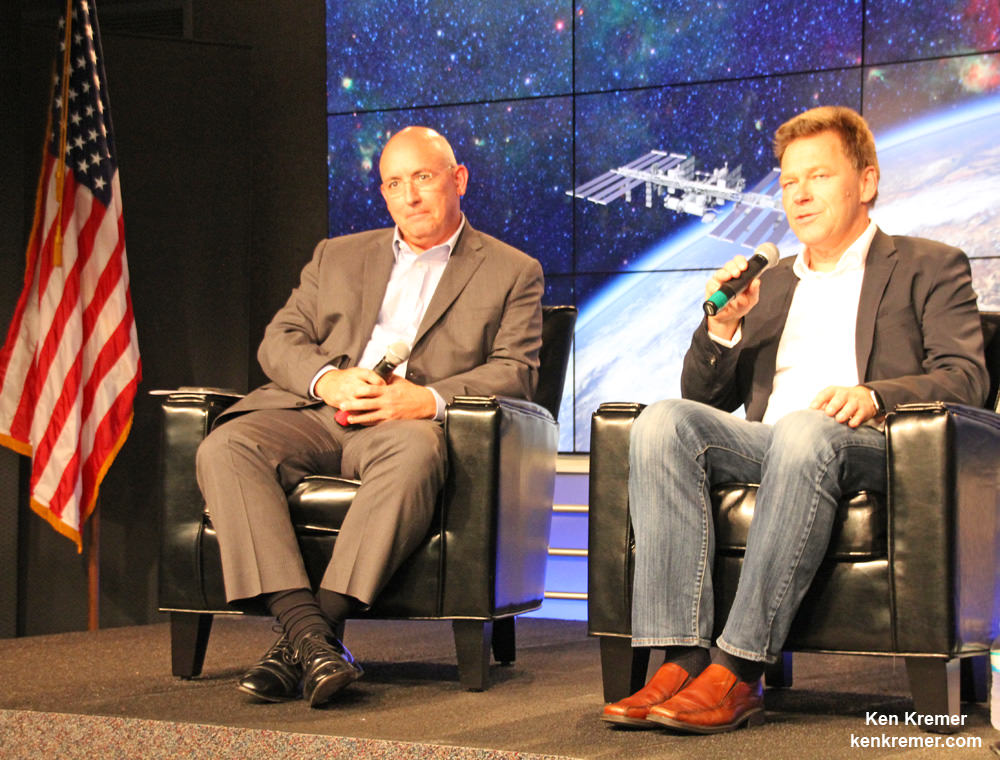

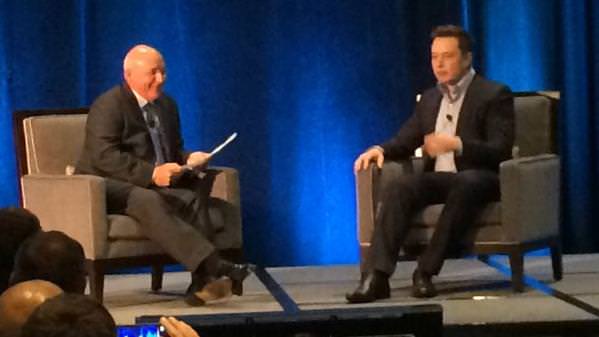
SpaceX will bounce back. Space flight isn’t easy, but I have faith they will fix any difficulties. This is why we in the US now have private companies doing LEO flights — they are more efficient and responsive than a government entity.
…and one hopes, transparent.
I love the way Musk is being careful with the specificity of his words and is repeating the mantra, “No theory yet fits all the data”. It’ll be interesting to see if any of the data is erroneous or there’s something yet to be discovered. Has sabotage been ruled out? (and NO I’m not in that camp… It’s simply a fair question)
How could they rule it out if they have no theory to explain all the data? If you don’t understand what happened, it makes no sense to speculate about whose fault it is.
We want is another view from outside the rocket. The view from the ground does not tell us that much: we can tell that the explosion was fairly symmetric, so the rocket went bang rather than folding in half or something like that, but not a lot more. A view from the side would be good. You don’t have planes circling a rocket launch for obvious reasons, but a high-flying drone might be a solution.
Would a laser strike on the 2nd stage be consistent with the available data? That would be a likely event to cause an overpressure on the oxygen tank in my layperson’s view. Please correct me if I am wrong
.
I do not take this sabotage thread seriously. If we could do this with lasers then it is a sign that earthly enemies are shooting down our rockets. If we cannot do this with lasers, then it must be un-earthly technology, perhaps deployed from flying saucers with cloaking devices.
However, there is a good engineering question here. We have something unexpected that disrupted the rocket. I would have thought anything that disrupted the rocket from the side while the rocket was accelerating would cause it to buckle, leaving one end or the other as a significant piece of debris. The fact that the whole rocket went to powder suggests that the disruptor is close to the rocket axis, and not off to one side.
Here is a laser bringing down a rocket…
http://www.gizmag.com/lockheed-martin-adam/27460/
You can see the spot on the side where the laser is heating the rocket. We probably could not see that from the vantage point we had, but after the explosion, we still see the front of the rocket as a significant chunk.
When you design a rocket, there are lots of parts that have to work. You cannot add a second valve if the first one sticks because that would make the rocket too heavy. But you can add some sensor that checks whether the valve has opened, and if it thinks it is still shut, the rocket software might have time for another go at opening it. More likely, the rocket has gone irrecoverably wrong, but we may be able to tell whether the valve never got the signal to open, opened a bit, stuck shut, opened then stuck open, opened and then bounced shut again, and so forth. There is one way of working, but many ways of going wrong.
The rocket telemetry contains things like the commands to open the valve, the sensor readings that monitor the valve. This data has not told us anything useful. This pretty much means that there is some other mode of failure that was not anticipated, and it is happening where there is no appropriate sensor to report it, which probably means it is not happening in an active component such as a valve. We have a suspect pressure reading from the oxygen tank, but this is indirect evidence: the sensor is (probably) faithfully reporting excess pressure, but it gives no good idea what caused it.
Or, to put it in sabotage terms, the ‘bomb’ goes off, but the telemetry does not contain any signals for arming the bomb, detonating the bon, then reporting a successful detonation.
Sticking in a ‘black box’ may seem a nice idea. But a rocket is a thin tube filled with enough chemicals to throw it clean off the earth, so there is enough energy to mess up any black box. A safer idea is to radio all the data straight back to earth, which is what they do, but that was not enough. The only other option I can see is to look at the rocket from another viewpoint, so you can see any explosion from the side.
Wait, this was a successful launch. Or at least the data was a success. When problems occur in testing and the test was considered a success, it should tell you something. There is a huge difference between getting good information on a failed test than declaring a failed test a success. Every rocket motor needs to be tested until it succeeds and not just producing good data.
With that said, we need fresh eyes on the problem to develop scenarios that have yet to be thought of as to why the launch was a failure. With out seeing the data, any guesses as to why it blew up is just speculation. Pretty much can rule out sabotage or lasers though. More than likely a pump got stuck wide open during throttle back or some scenario close to that where a part experienced rapid temperature change and warped it.
If the reason for the explosion of the Falcon 9 remains unclear, maybe one should look into the possibility of foul play… Who has to lose the most from a successful SpaceX? The MIC!
1. Step up security
2. double and triple check hard- and software!
Another question comes to mind:
“Why could the Dragon not use its escape system? Or does it not work at mach3?
I’d be real suspicious of the ground handling connex for the liquid O2. Would there have been a leak at the terminus of the umbilical, it might have sprayed the quick disconnect sensors and or valves, rendering false or low readings? A cryogenically frozen spider body?
How did it turn into powder?